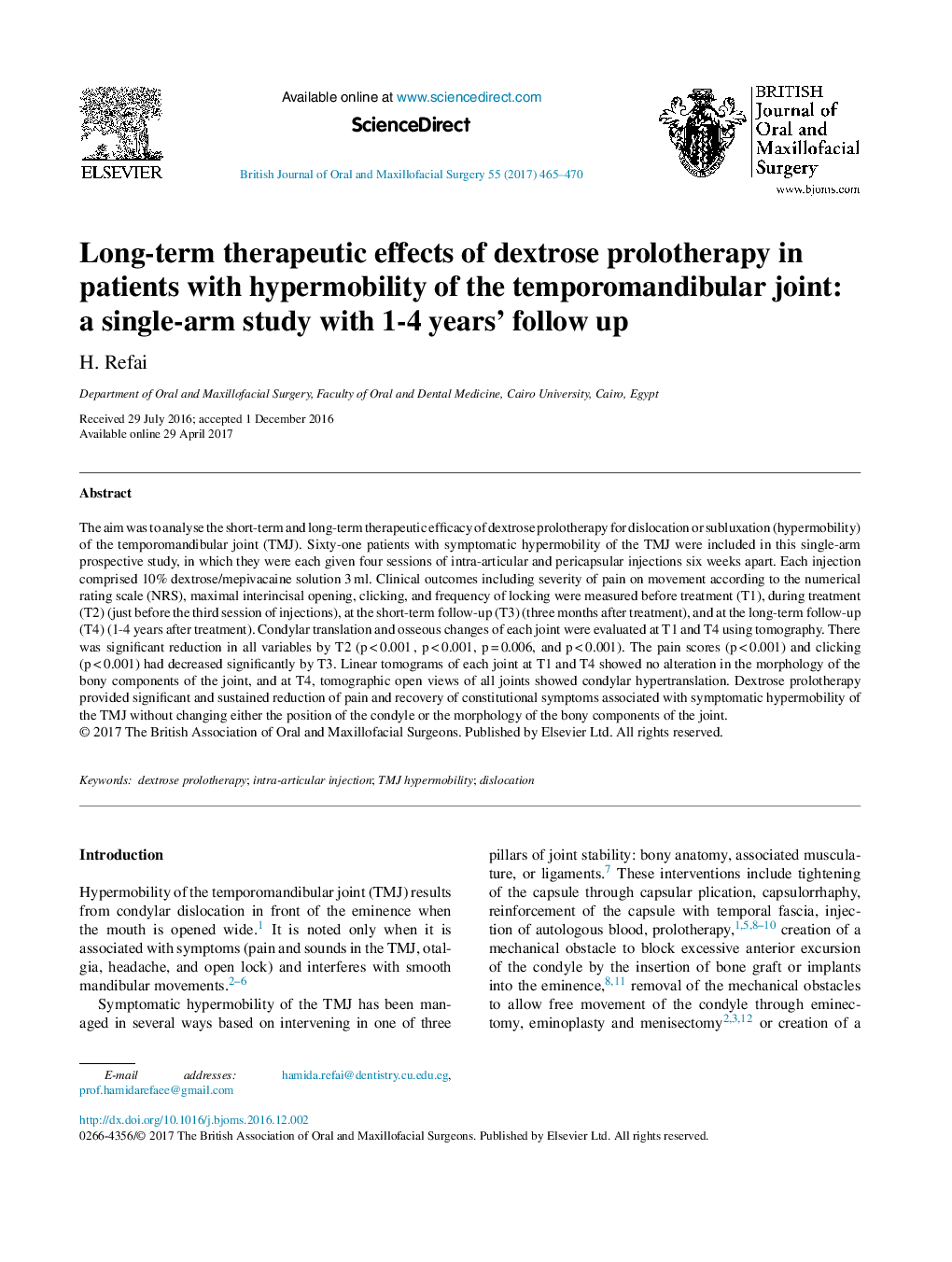| Article ID | Journal | Published Year | Pages | File Type |
|---|---|---|---|---|
| 5638392 | British Journal of Oral and Maxillofacial Surgery | 2017 | 6 Pages |
The aim was to analyse the short-term and long-term therapeutic efficacy of dextrose prolotherapy for dislocation or subluxation (hypermobility) of the temporomandibular joint (TMJ). Sixty-one patients with symptomatic hypermobility of the TMJ were included in this single-arm prospective study, in which they were each given four sessions of intra-articular and pericapsular injections six weeks apart. Each injection comprised 10% dextrose/mepivacaine solution 3 ml. Clinical outcomes including severity of pain on movement according to the numerical rating scale (NRS), maximal interincisal opening, clicking, and frequency of locking were measured before treatment (T1), during treatment (T2) (just before the third session of injections), at the short-term follow-up (T3) (three months after treatment), and at the long-term follow-up (T4) (1-4 years after treatment). Condylar translation and osseous changes of each joint were evaluated at T1 and T4 using tomography. There was significant reduction in all variables by T2 (p < 0.001 , p < 0.001, p = 0.006, and p < 0.001). The pain scores (p < 0.001) and clicking (p < 0.001) had decreased significantly by T3. Linear tomograms of each joint at T1 and T4 showed no alteration in the morphology of the bony components of the joint, and at T4, tomographic open views of all joints showed condylar hypertranslation. Dextrose prolotherapy provided significant and sustained reduction of pain and recovery of constitutional symptoms associated with symptomatic hypermobility of the TMJ without changing either the position of the condyle or the morphology of the bony components of the joint.
